MacBook Pro 2019 vs Asus ZenBook Pro Duo – which is the best pro laptop?
Who makes the best professional laptop – Apple or Asus?
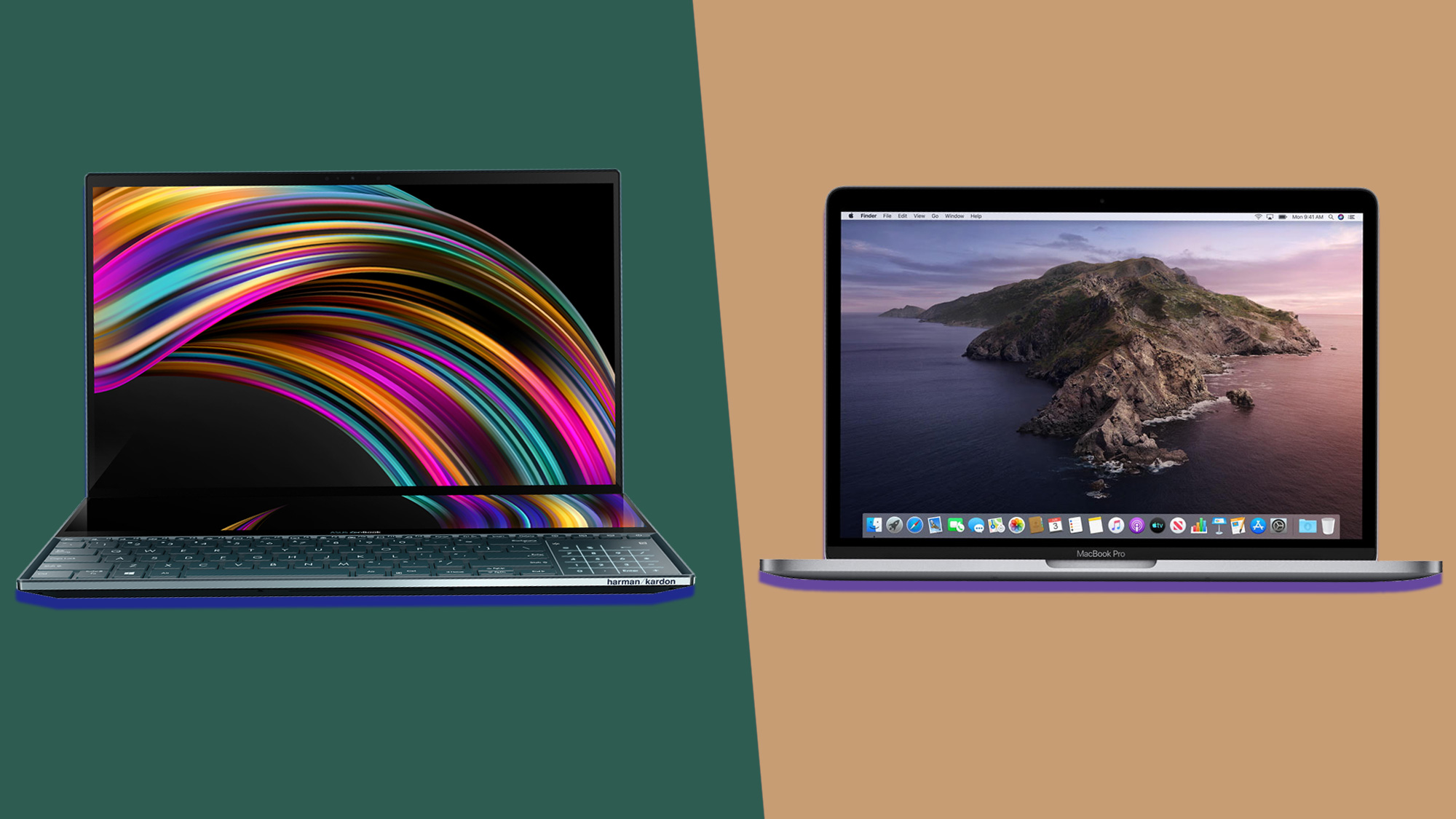
In many ways, the MacBook Pro 2019 and the Asus ZenBook Pro Duo are very similar devices. They are both packed with cutting-edge components that make them ideal laptops of creative professionals, which also means they’re both pretty expensive as well.
They also both have stunning main screens that make photos and videos look fantastic, and they each feature secondary screens that sit above the keyboards.
Those secondary screens are both noteworthy features that need to prove they are more than just gimmicks. And, with the high asking price of both laptops, it’s important to know which one to get.
So, read on to find out whether the MacBook Pro 2019 or the Asus ZenBook Pro Duo is the best professional laptop for you.
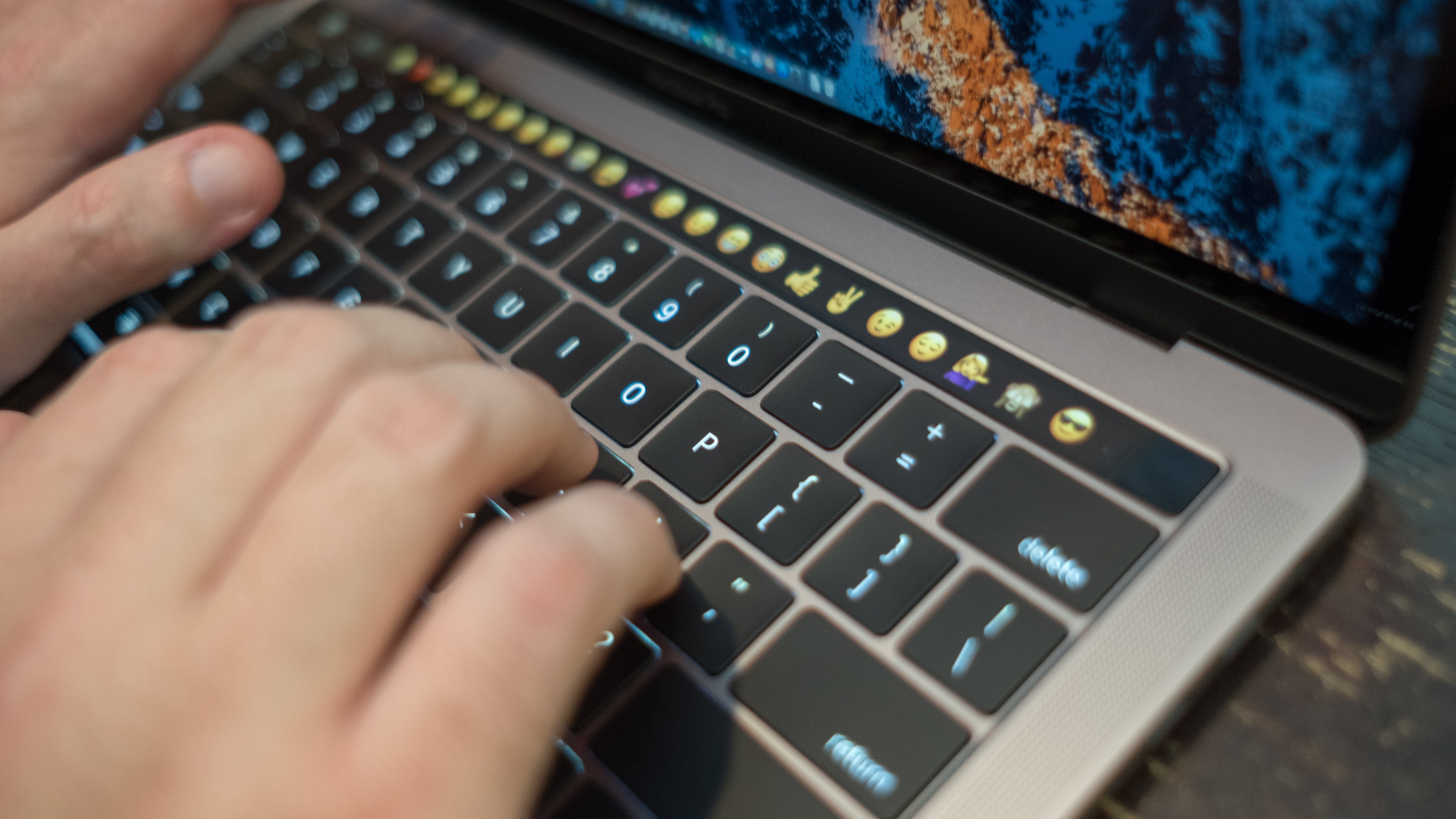
Price and specs
The 15-inch MacBook Pro 2019 costs $2,399 (£2,399, AU$3,499) for the entry-level model with a 2.6GHz 6-core 9th generation Intel Core i7 processor, Radeon Pro 555X GPU with 4GB of GDDR5 memory, 16GB 2,400MHz DDR4 RAM and 256GB SSD storage.
There’s also a model with a 2.3GHz 8-core 9th generation Intel Core i9 processor, Radeon Pro 560X with 4GB of GDDR5 memory, 16GB DDR4 memory and 512GB SSD storage for $2,799 (£2,799, AU$4,099).
These are high prices, as to be expected from a high-end Apple laptop, but the price of the 2019 model is actually pretty good value when you consider that, in the US and Australia, the price remains the same as the 2018 model – essentially getting you an upgrade for no extra money if you waited a year.
Sign up to the TechRadar Pro newsletter to get all the top news, opinion, features and guidance your business needs to succeed!
You can also configure the MacBook Pro 2019 and add more powerful components. A fully maxed out version with an 8th generation Intel Core i9 processor with 8 cores and a 2.4GHz clock speed (5.0Ghz boost), 32GB RAM, AMD Radeon Pro Vega 20 with 4GB of HBM2 memory and 4TB of SSD storage costs $5,149 (£4,914, AU$7,859).
Meanwhile, the Asus ZenBook Pro Duo comes in fewer configurations. One model comes with a 6-core Intel Core i7-9750H processor, and the price is $2,699 (£2,499, around AU$4,000).
There’s also a version with an 8-core Intel Core i9-9980HK processor, and that sells for $3,299 (£2,999, around AU$4,900). Both models come with an Nvidia GeForce RTX 2060 GPU, a 15.6-inch OLED 4K touchscreen, a choice of 8GB, 16GB and 32GB of RAM (your choice here will raise the price of the laptop) and up to 1TB SSD storage.

So, if you want more control over the specifications of your laptop, the MacBook Pro offers more choice – though it can be a bit bewildering if you’re not sure what components you need.
Meanwhile, the Asus ZenBook Pro Duo offers less choice – just the two CPUs and amount of RAM, which means it’s harder to get a configuration that perfectly fits your needs, but it’s also simpler as well if you’re not interesting in fiddling about with specifications.
Price and performance-wise, the MacBook Pro 2019 and Asus ZenBook Pro Duo are pretty evenly matched, though the highest-end model MacBook Pro is a lot more powerful (and more expensive) than the Asus ZenBook Pro Duo’s top model.
The AMD Radeon Pro 555X (and Radeon Pro Vega 20 if you upgrade) of the MacBook Pro 2019 is also a graphics card more suited to professional use, compared to the Asus ZenBook Pro Duo’s RTX 2060, which is a decent graphics card, but its primarily a consumer GPU for gaming. That does mean the Asus ZenBook Pro Duo can also double as a gaming laptop, something the MacBook Pro 2019 cannot do as well.
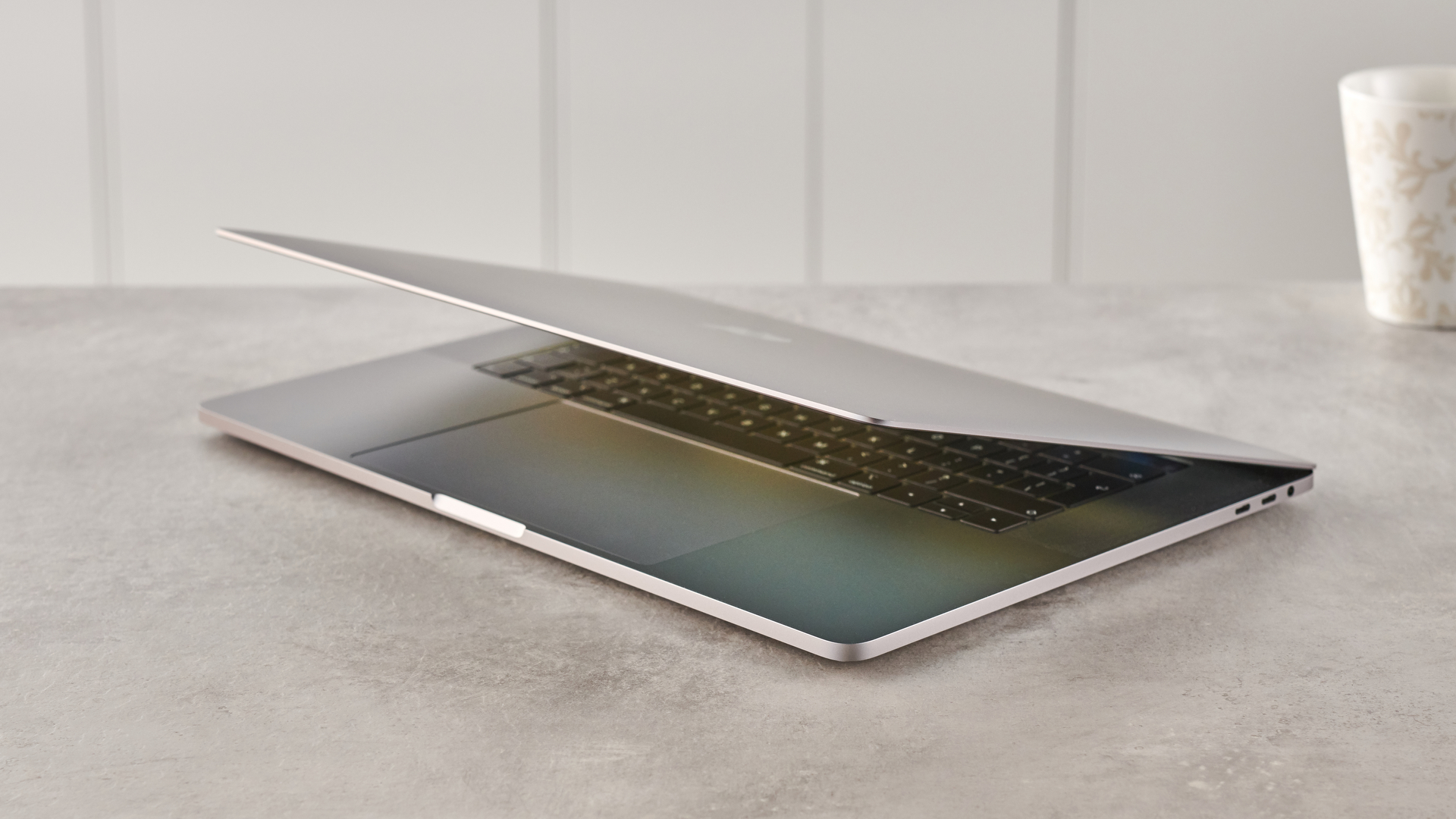
Design
It’s in the design stakes that the MacBook Pro 2019 and the Asus ZenBook Pro Duo really start to diverge.
The MacBook Pro 2019’s design is quite conservative, and is identical to the previous model of MacBook Pro.
So, the 15-inch MacBook Pro 2019’s dimensions are 13.7 x 9.48 x 0.61-inches (34.92 x 24.07 x 1.55 cm), and it weighs 4.02 pounds (1.83kg) – which, again, is exactly the same as last year’s model.
That means the MacBook Pro 2019 remains an impressively thin and light pro laptop. However, once again ports are very limited – you get just four Thunderbolt 3/USB-C ports (two on each side of the laptop) as well as an audio jack port – a rarity on an Apple device these days.
Anyone who relies on older peripherals like mice, keyboards or external hard drives will need to purchase an adapter. This can look messy, and it’s an additional cost – as Apple doesn’t include an adapter.
Creative professionals in particular may be disappointed by the limited port selection of the MacBook Pro 2019 – is it a price worth paying for the slim design?
Meanwhile, the Asus ZenBook Pro Duo’s design is far more revolutionary compared to previous ZenBooks – but that’s not necessarily a good thing.
Because of the inclusion of the second screen (which we’ll get to in a moment), the Asus ZenBook Pro Duo is a particularly thick and heavy laptop. With dimensions of 0.94 x 14.13 x 9.68-inches (2.4 x 35.9 x 24.6cm) and a weight of 2.5kg (5.51 pounds), this is a bulky device that especially compared to the MacBook Pro feels rather outdated and cumbersome.
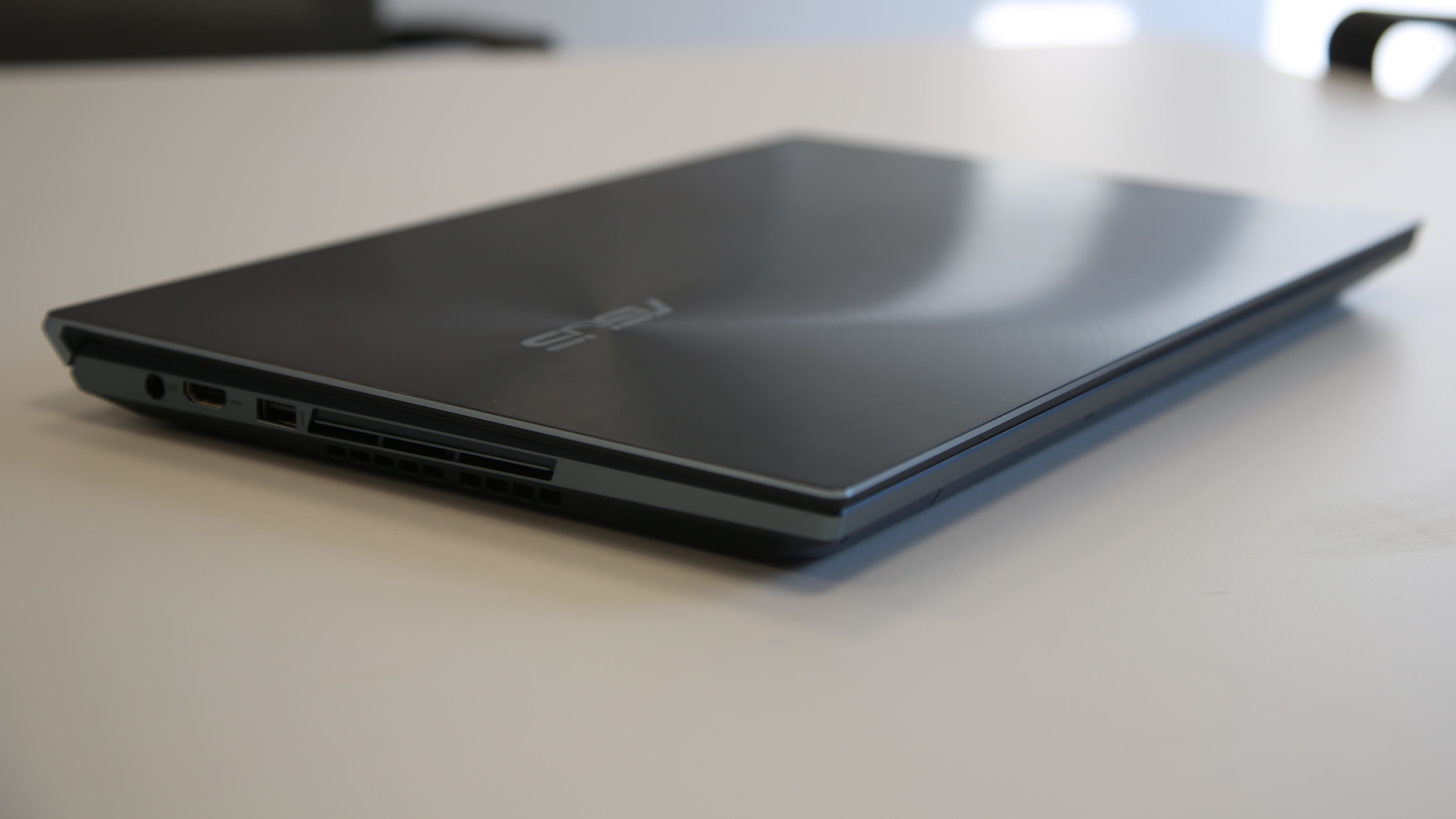
Port-wise, the Asus ZenBook Pro Duo is better than the MacBook Pro, but not by much. You get a Thunderbolt 3 USB-C port, audio jack and USB 3.1 port on the right-hand side of the laptop, and a power port, full-size HDMI and another USB 3.1 port.
Which means if you want to plug in an Ethernet cable or microSD card, you’re going to need an adapter, like the MacBook Pro.
However, while the Asus ZenBook Pro Duo has the slight edge over the MacBook Pro when it comes to ports, overall the design of the MacBook Pro is leagues ahead of the Asus ZenBook Pro Duo.
Apple’s device is thinner, lighter and much more stylish in general. If you’re looking for a laptop to carry around with you, then there’s no competition – the MacBook Pro is the one to get.
Main display
Both laptops have similar screens, and they are both excellent. The MacBook Pro (2019) has a 15.4-inch screen with 2,880 x 1,800 Retina resolution. It uses a backlit LED IPS panel, and is capable of 500 nits brightness.
It’s also supports wide color P3 gamut – essential for video editors or anyone who needs their screen to be able to show colors accurately.
While the MacBook Pro (2019)’s screen is gorgeous, the Asus ZenBook Pro Duo blows it away with a 15.6-inch, OLED Ultra HD (3,840 x 2,160) screen. The higher resolution, combined with the superior OLED technology means the screen of the Asus ZenBook Pro Duo is absolutely stunning – if you’re working with 4K footage, then this is the laptop to get.
It also offers 100% DCI-P3 color gamut, as does the MacBook Pro (2019), which is an important consideration for video editors.
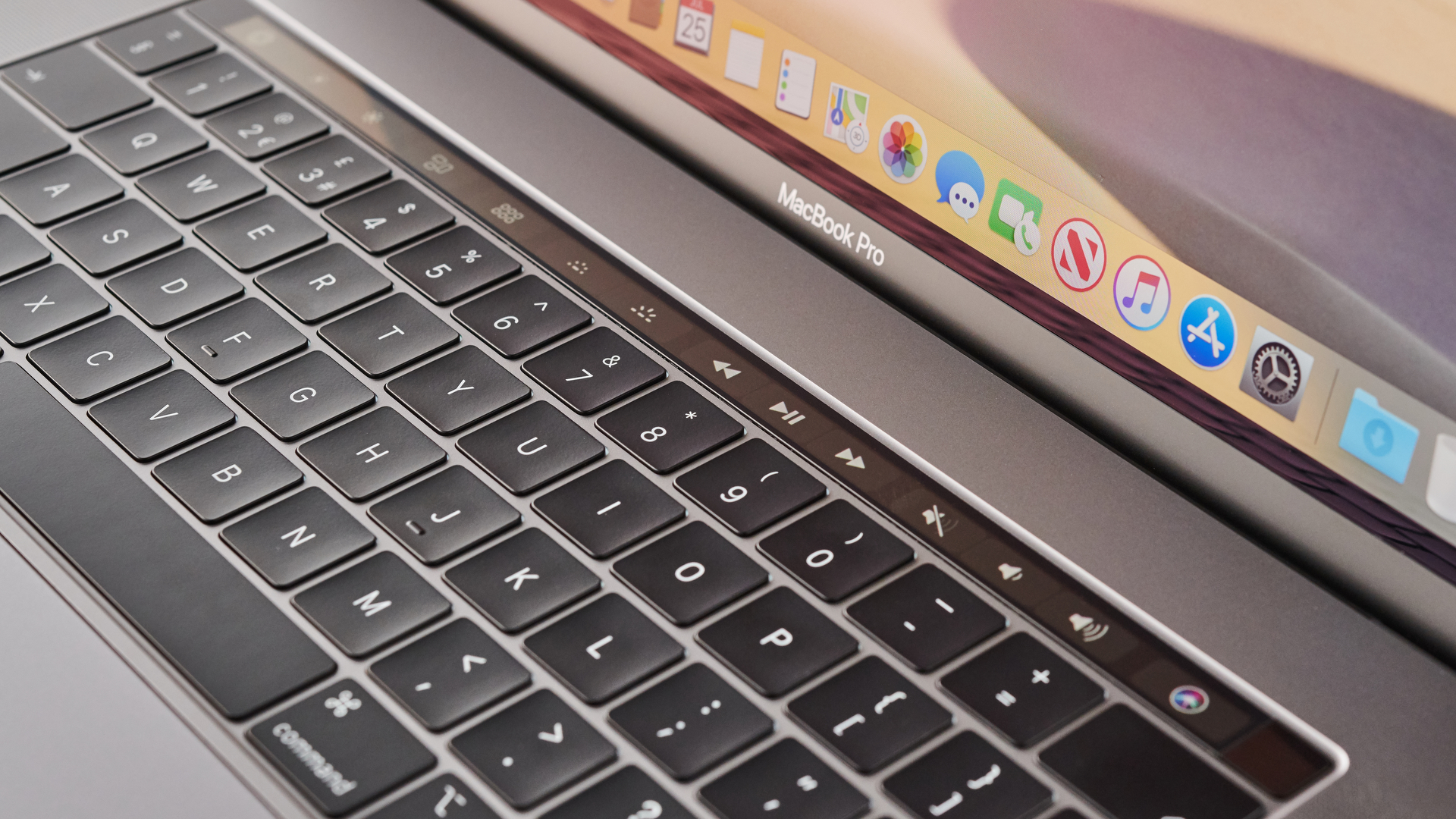
Second screens
Now here’s where things get really interesting. Both the MacBook Pro (2019) and the Asus ZenBook Pro Duo feature second screens above the keyboard, but both laptops approach this in very different ways.
The second screen of the MacBook Pro, known as the Touch Bar, is a lot more simple – and some would say limited – as it is a thin glass touchscreen that stretches along the top of the keyboard, displaying context-sensitive buttons on its 2,170 x 60 resolution screen.
These buttons change according to the application or task that you’re performing, and are designed to give you quick shortcuts for a more seamless workflow. Since the Touch Bar launched in 2016, an increasing number of applications support it.
The Touch Bar can be genuinely helpful in some respects, offering quick access to tools and shortcuts depending on what app you’re running. However, even if you don’t use it that much, it’s thin design means it will sit unobtrusively at the top of the keyboard, and it doesn’t feel like the design of the MacBook Pro has been drastically affected to accommodate the Touch Bar.
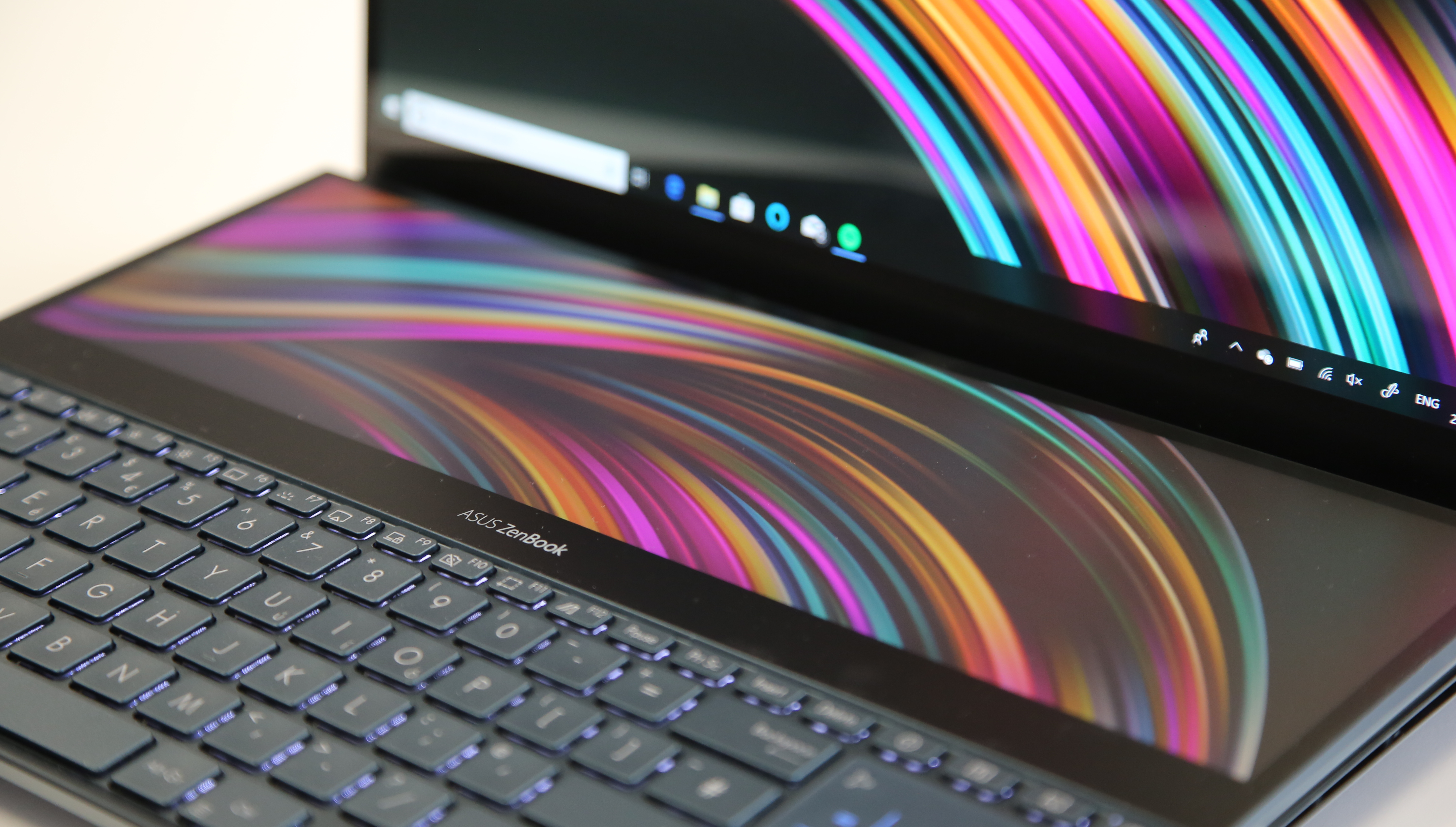
On the other hand, the Asus ZenBook Pro Duo’s second screen, known as the Screenpad Plus, is a far more ambitious feature. Stretching along the top of the keyboard, and with a resolution of 3,840 x 1,100, the Screenpad Plus is effectively used as a second screen by Windows. This means you can have whole apps and windows open on the lower screen, freeing up the main screen for yet more apps and windows – a great tool if you’re into multitasking.
Asus also provides software for the Screenpad Plus that lets you pin shortcuts and apps to the screen, and to use it in a similar way to the MacBook Pro’s Touch Bar. However, third party app support is basically non-existent due to how new (and rare) the Screenpad Plus is.
The Screenpad Plus can also be used with the included Asus Pen stylus, essentially turning the Screenpad Plus into a drawing tablet – making it a tempting choice for digital artists.
So, the Screenpad Plus is a far more versatile screen than the Touch Pad. However, it has also had a bigger impact on the rest of the laptop. The main reason why the ZenBook Pro Duo is so heavy and bulky is because of the second screen. It also means the keyboard is brought forward, and the trackpad shifted to the side of that. Battery life is also impacted – with the Asus ZenBook Pro Duo’s battery lasting five hours and 11 minutes in our battery benchmark test. In the PC Mark 8 benchmark, which aims to replicate moderate PC use including word processing and video calling, the battery lasted just two hours and 36 minutes.
Meanwhile, the MacBook Pro’s battery is hardly affected by the inclusion of the Touch Bar, and lasted seven hours and 36 minutes in our tests.
If you’re going to use the Screenpad Plus a lot, this won’t be too bad. However, if not, then it’s a lot harder to ignore – and even more difficult to justify paying extra for the second screen.
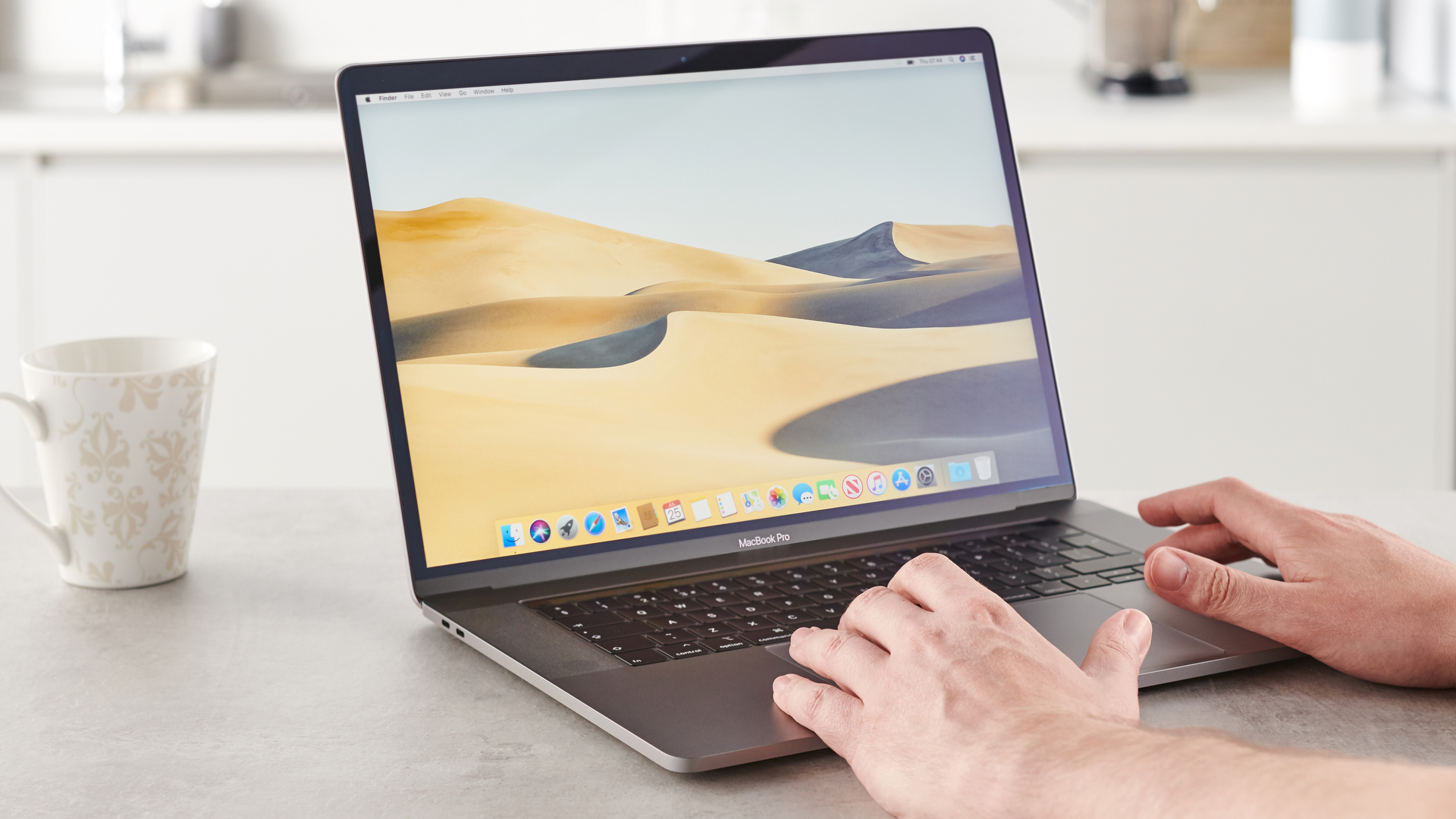
MacBook Pro 2019 vs Asus ZenBook Pro Duo: which should you buy?
Both the MacBook Pro 2019 and the Asus ZenBook Pro Duo are very powerful laptops that are aimed at creative professionals.
If you want the one with the best screen – and arguably one of the best screens on a laptop period – then the Asus ZenBook Pro Duo is the one to get. Its 15.6-inch 4K OLED screen looks absolutely phenomenal, and while the MacBook Pro’s Retina screen is very good, it just can’t compare on pure pixel density.
However, that’s the only thing the Asus ZenBook Pro Duo beats the MacBook Pro at – unless you’re going to be using the Screenpad Plus a lot. The additional 4K screen on Asus’ laptop is a remarkable feat, and definitely has some interesting uses, but it also makes the Asus ZenBook Pro Duo thicker, heavier, more expensive and much shorter lasting than the MacBook Pro on battery.
The MacBook Pro’s Touch Bar might not be quite as impressive, but it has some useful features, better third party support and crucially doesn’t mean Apple had to make major compromises to the MacBook Pro’s design.
The MacBook Pro beats the Asus ZenBook Pro Duo when it comes to performance, design and battery life. If you’re after a powerful pro laptop that’s easy to carry around and can handle modern creative tasks with ease, then the MacBook Pro is the clear winner here.
- The best laptop 2019: our pick of the 15 best laptops you can buy this year

Matt is TechRadar's Managing Editor for Core Tech, looking after computing and mobile technology. Having written for a number of publications such as PC Plus, PC Format, T3 and Linux Format, there's no aspect of technology that Matt isn't passionate about, especially computing and PC gaming. He’s personally reviewed and used most of the laptops in our best laptops guide - and since joining TechRadar in 2014, he's reviewed over 250 laptops and computing accessories personally.